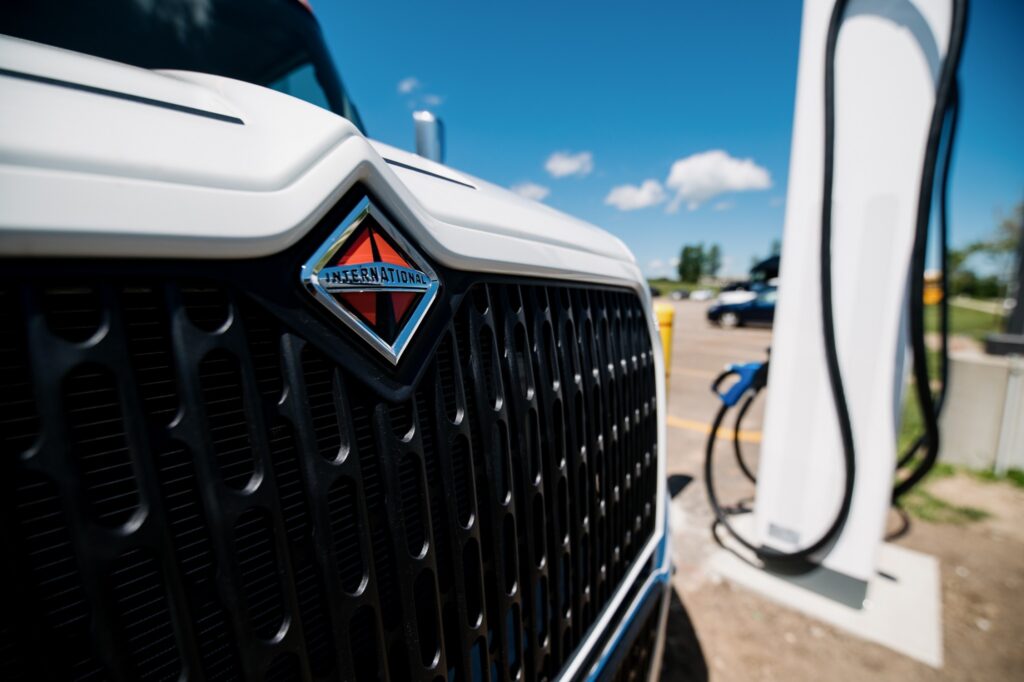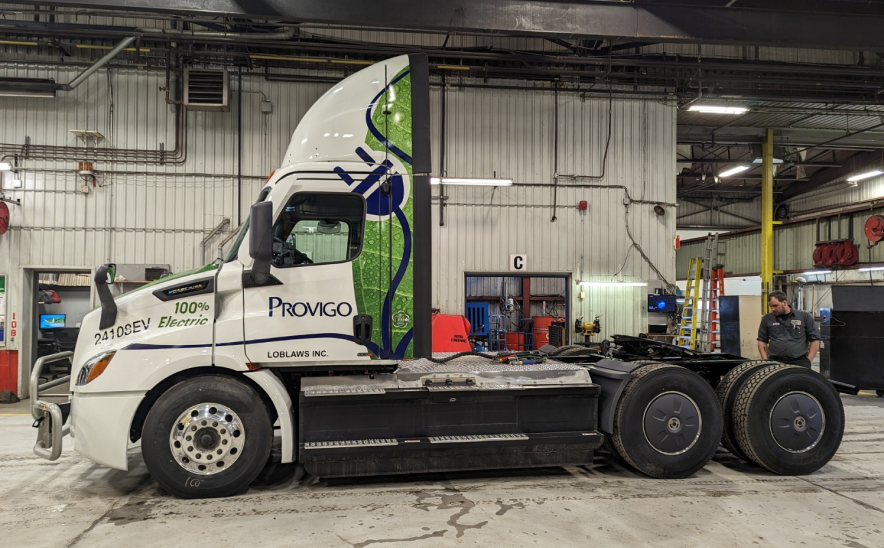Next round of EPA/CARB emissions standards will be toughest yet
Previous rounds of EPA heavy-duty emissions standards have been challenging to reach, but truck manufacturers have yet to face the type of challenge coming down the pike in 2027.
Both the EPA and California Air Resources Board (CARB) will take different ways to the same end goal, which is zero emission vehicles. The national and California requirements realign in 2027, which Sean Waters, vice-president product compliance and regulatory affairs for Daimler Truck North America (DTNA) said that realignment by 2027 is needed. He was speaking at FTR’s Transportation Conference in Indianapolis Sept. 11-14.

Daimler’s own goal is to produce 100% zero emissions vehicles for the Triad market (North America, Asia and Europe) by 2029.
“It’s not going to be a straight line,” Waters said. “It’s going to be a winding road.”
Goran Nyberg, Navistar’s commercial vice-president of commercial operations, said there’s a stark difference to the 2027 emissions requirements and previous EPA go-rounds.
“Over the years, it has been quite the smooth ride,” he said of previous emissions regimes. “There were a lot of changes but no real change to the business model.”
Charging infrastructure needed
Navistar’s targets are to produce 50% zero-emissions vehicles by 2030 and 100% by 2040. But for battery-electric vehicles, the biggest roadblock is the lack of charging infrastructure, a factor outside the control of Navistar and other truck makers. There has been a proposal by EPA to modify the 2027 standards, but Waters said modifying the previously announced Obama administration-era requirements would be counterproductive.”
“We think at the end of the day, EPA issued an achievable rule that’s going to deliver the environmental benefits we want,” said Waters. “It would be a bad precedent if changed. It makes it really hard as an OEM to make the financial commitments we need to be able to succeed with these rules.”
His biggest concern, however, is the readiness of utilities and the electrical grid to build out the infrastructure needed to support BEVs.
“The success of GHG Phase 3 hinges on infrastructure, which is entirely outside our control,” Waters said.
DTNA built its own heavy-duty chargers in Portland, Ore., to support its fleet of new EVs – the eCascadia, eM2 and electric buses.

“It took two years to build on land we already owned with acceptable power already in the area,” he cautioned. “It turns out building actual infrastructure on property you own is not the greatest challenge; it’s getting power from the utility.”
There are some 3,000 utilities and 49 public utility commissions in the U.S., Waters said. “They all have their own rules and regulations on what it takes to have big power available. “In general, we found utility regulators do not build up capacity until there is demand for the product, and regulations don’t appear to count in demonstrating demand.”
It may take six months to build up a charging station with one utility, and six to eight years with another, Waters warned. “We have trucks sold today that customers haven’t been able to take delivery of because there’s no place to charge them,” he said.
And even where charging infrastructure is available, total cost of operation parity with diesel will need to be achieved.
Nyberg said collaboration between OEMs and other stakeholders will be needed to meet the 2027 and future standards.
“We are pretty well prepared when it comes to the vehicles,” he said. “But we are quite dependent on the infrastructure that needs to be in place to support and enable the deployment of EVs.”
“It’s not just handing over the keys anymore,” he added.
Dealers will have a role to play beyond 2027 as well, as ever-increasing percentages of vehicles sold will have to be of the zero emissions variety. A dealer that places an order for 1,000 trucks will have to take a certain number of BEVs.
“It sounds harsh but it’s the reality with the proposed regulations that we have,” said Nyberg.
Will there be a pre-buy?
In previous rounds of EPA emissions standards, fleets scrambled to pre-buy trucks before the stricter rules – and their higher costs – took effect. Will there be a disruptive pre-buy in the months leading up to 2027? Eric Starks, chairman of FTR, said it is too soon to say. Freight market dynamics will determine the extent to which a pre-buy occurs.
“What we don’t know is what the cost [of ZEVs] is,” Starks said. Back in 2002 there was a pre-buy of about 9,000 Class 8 trucks, with purchases pulled forward to the third quarter of the previous year.
“It took just one quarter to get back to normal,” said Starks. In advance of the EPA07 emissions rules there was another Q4 pre-buy, which took a longer three to four quarters to work through. Fleets may take their cues from the overall freight market.
“What happens if the freight market takes off in 2025?” Starks asked, noting OEMs won’t be able to keep pace with an onslaught of pre-buys. “Let’s say there’s a weakening in freight in 2025. Now our forecast is lower, and you have the ability to build those trucks, so it’s really going to depend on where we are in the cycle and how big this plays out. It’s very possible when we look at all the risks that they can’t pre-buy. It’s something we’re going to have to pay attention to.”
Have your say
This is a moderated forum. Comments will no longer be published unless they are accompanied by a first and last name and a verifiable email address. (Today's Trucking will not publish or share the email address.) Profane language and content deemed to be libelous, racist, or threatening in nature will not be published under any circumstances.
I’m glad I don’t own a truck any more but it will be hilarious to watch all the do gooders start crying when they can’t start their own car or their coffee maker won’t perk because the grid has collapsed due to the drain from trucks being charged. And where do they think all this power is coming from ?
-
coal and diesel generators – LOL
Other countries like Mexico do not have to meet current standards
We should look at natural gas powered units as a better solution and be happy with current standards
This along with higher carbon tax and short-term housing shortage that is pushing more people to live tents as homeless will cause inflation.